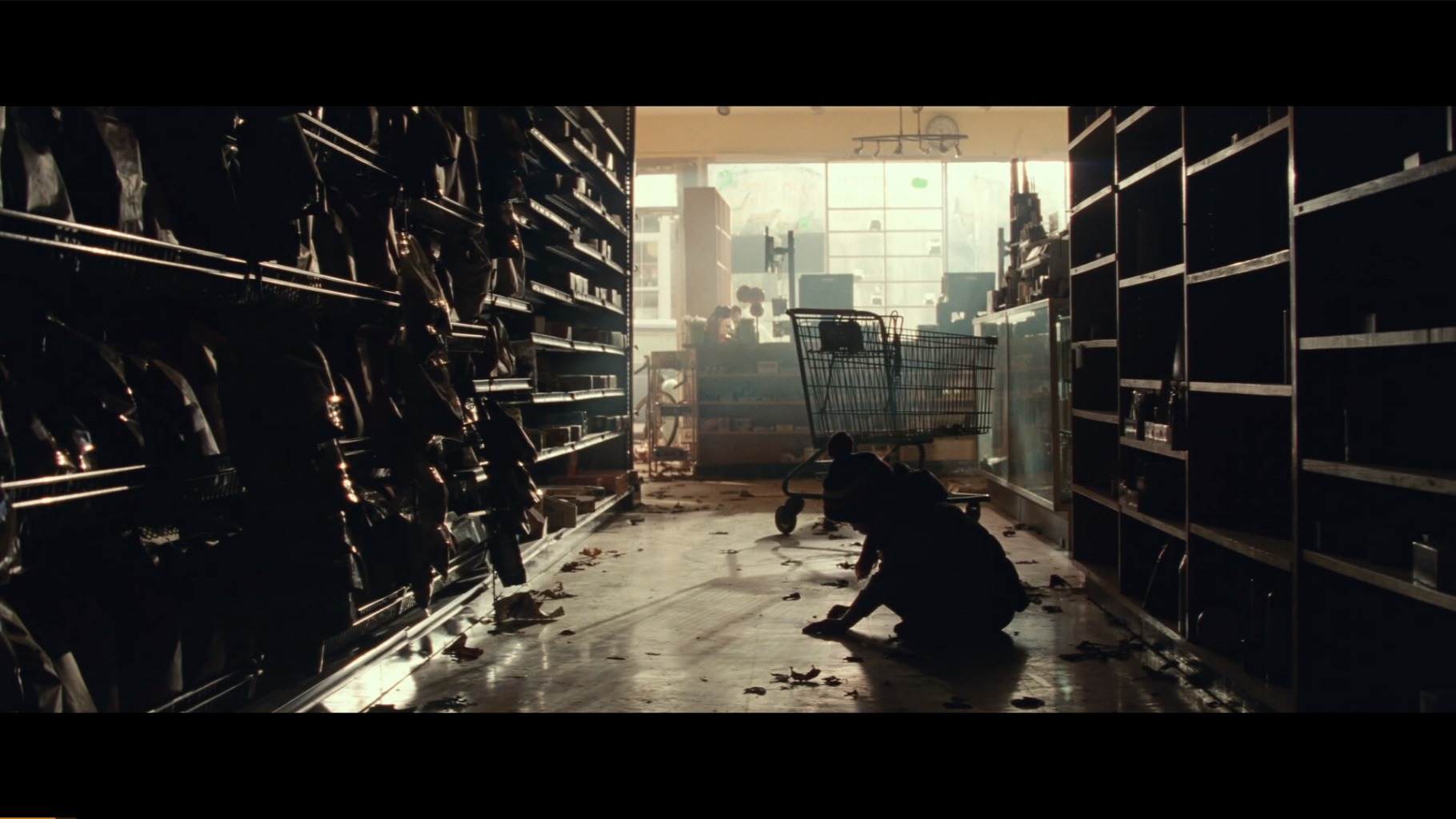Happy almost Halloween! I’m taking a break from the slew of author interviews I’ve been doing with the winners of our worldbuilding short fiction contest. My fellow staff writer Heather is currently posting weekly interviews with the Young Author Grand Prize winners (check out her interview with the 1st place winner, Shadonovic, here).
Before I get started posting interviews with our People’s Choice winners in a few weeks, I thought it would be fun to celebrate the Halloween season with some analyses of horror TV shows and movies and what we can learn from them as writers. This week we’ll be discussing some of my favorite horror films.
As I often like to do in my writerly TV and movie articles, we’ll be delving deep into the first few minutes of each film to see how they get off to a roaring good start (the beginning always being one of the toughest parts for a writer). So without further ado, here are three horror films you can study to learn more about how to tell a good story.

The Shining: Loss of Sanity
Where to watch it: HBO Max
When discussing horror classics, this 1980 film inevitably comes up. It is the source of countless pop culture references—the two little girls in the hallway, Jack writing “All work and no play makes Jack a dull boy” at his typewriter over and over, and Jack’s head popping through the wall saying, “Here’s Johnny!”. I only saw The Shining for the first time a few years ago and spent the entire time going, “Oh this is what that’s from”. While you can study how incredibly effectively creepy this film is, one particular aspect of the movie to pay attention to is the loss of Jack’s sanity. It is fascinating to watch Jack go insane over the course of the film, and if you’re writing a mentally unstable character, you could learn a lot.
The film begins with Jack Torrance driving through scenic trees and mountains. A black title card says, “The Interview” and Jack arrives at the Overlook Hotel. He meets with Mr. Ullman. Meanwhile, Wendy Torrance and their son Danny are at home with Danny watching TV and Wendy reading a book. Danny asks if she really wants to go live in that hotel for the winter and she says yes and that it’ll be fun. He says there’s no one to play with around there anyway, and Wendy asks what Tony thinks of the move. Danny moves his finger up and down and does a high-pitched voice to speak as Tony, his imaginary friend.
Back at the Overlook, a man named Bill joins their meeting. Mr. Ullman tells Bill that Jack is going to be taking care of the Overlook this winter and asks to show him around after the meeting. Mr. Ullman says Jack is a schoolteacher, and Jack corrects that he’s a former schoolteacher and that he’s now a writer. Mr. Ullman explains that the season runs from May 5th to October 30th, saying it wouldn’t be financially feasible to keep the road open since it gets buried under twenty feet of snow. He says the hotel was built in 1907 and the site was chosen for its “seclusion and scenic beauty”.

Mr. Ullman describes the job and warns against the great sense of isolation Jack might feel. Jack says that’s exactly what he’s looking for since he’s outlining a new writing project. Mr. Ullman describes the tragedy that happened at the hotel in the winter of 1970—Charles Grady was hired as winter caretaker and came up with his wife and two daughters. Charles had a complete mental breakdown and killed his family with an ax, then shot himself. Jack isn’t put off by the story, and says his wife (a ghost story and horror film addict) will be fascinated.
In just the first ten minutes of this film, the overall premise is neatly set up. Everything that happens to Jack is warning him of the dangers of this job—even his unnerving drive to the hotel shows us how beautiful yet isolating this location is. No time is wasted on exposition; through concise dialogue, we learn that Jack is planning to take his wife and son to live at the Overlook Hotel and take care of the place during the winter.
Even just hearing about the heavy snow blocking any kind of exit from the hotel to the grisly murders that have taken place there is enough to make the hairs on the back of your neck stand up. This film does a marvelous job showing us right away how Jack might be driven insane by his caretaker position, and what the dire consequences might be.

A Quiet Place: An Inventive Premise
Where to watch it: Paramount+
We’ve all seen horror movies featuring serial killers, vampires, zombies, and the like. They all utilize a similar formula (one we will discuss more with our next film) and it’s easy to feel like it’s all been done before. This 2018 film manages to bring a new and fresh take on the horror movie. In the film, aliens attack the earth. The aliens are extremely sensitive to sound. A family works to survive in a post-apocalyptic world making as little noise as possible.
The film begins with a title card that says, “DAY 89”. Then we see a traffic light laying broken on a deserted street. The camera pans over a wall full of Missing Persons notices. Inside a derelict pharmacy, Beau runs around while his older sister Regan explores more slowly. Her other brother Marcus is slumped against the wall, clearly ill. We can see prescription bottles on shelves and the children’s mother, Evelyn, searching for a particular bottle. She then gives the pills to her ailing son. “He’s okay,” she tells Regan in sign language.
Regan goes to sit with Beau who makes a sign for a rocket. He says in sign language that it’s how they’ll get away. He goes on a stepstool to get a toy rocket off a high shelf and knocks it down. Regan dives in to catch the toy before it hits the ground. She pants, clearly afraid. They go to their father, Lee, who signs to Beau that he should find their mother. Regan finds a part for the radio her father’s been working on that might boost the signal. A pair of pliers is for her. As the family is about to leave, Beau approaches with the rocket toy. Lee cautiously steps forward, takes the toy from his son, and removes the batteries. He warns Beau that the toy is too loud.

Outside there is an old newspaper flapping in the wind whose headline is “It’s Sound!” Inside the pharmacy, Regan gives Beau the toy rocket with a smile, leaving the batteries. After she goes, Beau grabs the batteries before following his family.
They walk home in bare feet. As they are crossing a bridge, the family hears the beeping sounds of the toy rocket. Evelyn covers her mouth to stifle her scream as Lee runs toward his son but one of the aliens—who we only see for a moment—comes and snatches Beau.
In just the first ten minutes of the film, A Quiet Place builds its world beautifully and presents its unique premise with barely a sound. The nearly utter quiet of the movie’s opening scene serves to discomfort the audience. The flyers for missing people and deserted street quickly show us that this is a post-apocalyptic world. The way Evelyn gingerly handles the prescription bottles and how Regan urgently catches the falling toy rocket show us (without telling) that sound is dangerous. We’ll later learn that Regan is deaf, which gave this family a leg up since they all already knew sign language.
This is an emotional and fascinating film that is well worth watching just for its entertainment value (perhaps as part of your Halloween horror movie marathon). But you can also learn a great deal both about how to build your world and how you might create a horror story that is different from what’s already out there.

The Cabin in the Woods: Fusing Comedy and Horror
Where to watch it: Rent or buy it on YouTube
Last week, we talked about how What We Do in the Shadows injects humor into the horror genre. Cabin in the Woods is a movie that does the same thing. But while you’re not likely to find a lot of creeps or chills in What We Do in the Shadows, this movie delivers both laughs and scares. It takes the formula of a horror movie—the one A Quiet Place so elegantly evades—and turns it on its head. This is one to study for fusing comedy and horror, and breathing new life into horror tropes.
As the film opens, we see drops of blood seeping, revealing ancient Egyptian illustrations. Then there’s a quick shift to a sign advertising coffee. Two men, Sitterson and Hadley, are having a mundane conversation as one buys coffee from the coffee machine. As they walk through the office, Lin arrives to tell them that Stockholm went south and she hasn’t “seen the footage”, but this just leaves them and Japan. Lin is concerned about failing but the other two seem sure that Japan will succeed. Sitterson wonders if Lin is in the betting pool this year. As the two drive off in a golf cart, “THE CABIN IN THE WOODS” appears onscreen accompanied by the sound of screams.

Cut to a house where Dana is packing a bag. She looks at a sketchbook where she finds a skillful sketch of a man. Jules looks over her shoulder, condemning the professor who broke Dana’s heart. Dana is surprised to find Jules’ hair blonde. Jules talks about setting Dana up with her boyfriend’s friend Holden, which Dana is not interested in. Jules is disgusted by the schoolbooks Dana has packed. Jules’ boyfriend Curt tosses a football through the window at Holden, which he catches. Curt shows Dana another book she should read.
This intro juxtaposes two very different scenes—colleagues at an office, and friends about to head off on a trip together. The colleagues at the office talk about some mysterious project and a “betting pool”, piquing the viewer’s interest. Then we see something both familiar and not. In some ways, these friends seem like the prototypical horror movie leads headed on a trip to a creepy cabin in the woods—the virgin, the blonde bimbo, and the jock. Only the supposed virgin had an affair with her professor, the bimbo is in a happy relationship, and the jock is clearly very intelligent.
You can tell from this opening that this is a humorous story with trope horror elements that have been changed somewhat. This movie goes on to be a commentary on what horror movies are and how they affect people. If you’re looking for inspiration for an amusing horror story with meta elements, look no further. You will find laughs, chills, and a unique take on what a horror comedy can be.
I hope you all have a wonderful Halloween and find some way to incorporate the TV shows and movies I’ve covered into your celebrations. Everyone loves a good horror marathon, after all!
If you’ve been missing the author interviews, tune in tomorrow to catch Heather’s interview with Sabrina Li, the 2nd place Young Author Grand Prize winner of our worldbuilding short fiction contest!
Follow us on Facebook | Instagram | Twitter | Discord